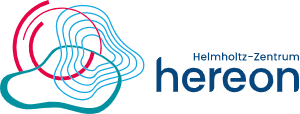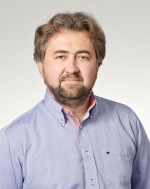
In the years since the institution was founded in 1956, the spectrum of activities at the Helmholtz-Zentrum Hereon (previously called HZG – Helmholtz-Zentrum Geesthacht) has moved to accommodate the shifting focus of social, scientific and economic inquiry in order to arrive at the center’s present research profile. In accordance with our motto — “Science creates benefits” — the researchers at the Helmholtz-Zentrum Hereon not only produce scientific knowledge but also apply it to a range of concrete uses for the present and future.
As a member of the Helmholtz Association of German Research Centres, the largest scientific organization in the country, the Helmholtz-Zentrum Hereon is engaged in long-term activities in the fields of materials and coastal research that are making a major contribution to resolving the large and pressing issues facing society and the scientific and business worlds.
Our work in the field of coastal research is devoted to the growing and complex problems facing coastal regions worldwide as a result of the pressures of increasing settlement and industrialization, as well as the threat of natural dangers such as tsunamis and flood tides. The issues of climate change, material fluxes and the coastal habitat require professional management founded on a sound scientific basis. The coastal researchers at the Helmholtz-Zentrum Hereon have made it their business to provide the latter.
Activities in the field of materials research at the Hereon are focused on development and testing of especially lightweight materials and advanced engineering materials. An overriding goal here is to conserve raw materials and energy resources. The spectrum of activities in materials research ranges from the development of new alloys along with original production and processing methods to the characterization and testing of newly developed materials.
In addition to investigating new metallic materials, researchers of the Helmholtz-Zentrum Hereon also study polymers for use as membranes in a range of applications, including gas-phase separation, fuel cell technology and biogas cleaning. Likewise, in the field of regenerative medicine, our newest field of research, the Hereon has already achieved some highly promising developments in the use of biological materials for the regeneration of cells, tissue and organs. Biological materials represent a young area of research with major potential for the development of groundbreaking new treatment methods.
In all its varied and complex areas of research, the Helmholtz-Zentrum Hereon relies on a unified strategy involving the establishment of tight-knit networks and alliances with partners from science and industry. The Hereon cooperates with working groups from home and abroad and closely monitors the strategies of rival institutions and the needs of its partners.
The Helmholtz-Zentrum Hereon places a high priority on the creation and utilization of research platforms. Such platforms bring together, in localized or virtual form, the scientific and technical expertise and equipment needed for specific research projects. They thus provide nucleation points for national and international research alliances, force the development of advanced technology and increase Germany’s attractiveness as an international location for science.
The Helmholtz-Zentrum Hereon makes a lasting contribution to the development of a society and an economy founded on scientific principles. As a member of the Helmholtz Association of German Research Centres, the Helmholtz-Zentrum Hereon and its work also stand in the tradition of the celebrated natural scientist Hermann von Helmholtz (1821–1894).

Contact: Mikhail Zheludkevich (mikhail.zheludkevich@hereon.de) – Hereon Team Leader
Team Leader
Prof. Mikhail Zheludkevich
Mikhail Zheludkevichis currently Head of department of Corrosion and Surface Technologies at Helmholtz Zentrum Hereon. He is also professor at University of Kiel as well as invited researcher at University of Aveiro. In 1998 he graduated with distinction from the Belarusian State University and took his PhD degree in Physical Chemistry in 2002 from the same University. Since 2003 he started as a post-doc researcher and became a group leader at University of Aveiro. In 2014 he got professorship at Kiel University in Germany and was appointed as head of department at Helmholtz Zentrum Hereon with main focus on electrochemistry, multi-functional surfaces and active protection of light materials and multi-material systems. Additionally he is a member of technical group in Research Fund for Coal and Steel and is vice-chairman of Aerospace Working Party at European Federation of Corrosion. In 2010 Mikhail was awarded with a prize of Best Young Portuguese Electrochemist. Prof. Zheludkevich has published more than 140 ISI papers, 12 book chapters, presented about 30 invited and key-note talks and is a co-inventor in 12 patent applications.
